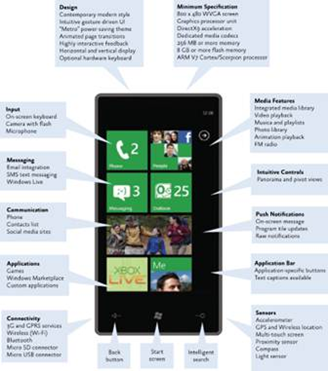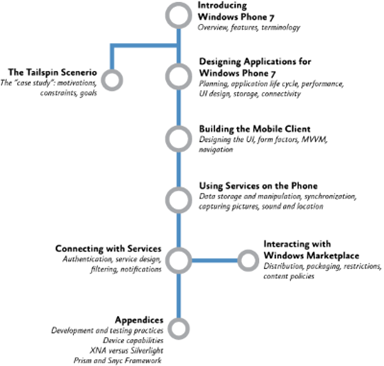Patterns & Practices "Windows Phone 7 Developer Guide" Released!
Windows Phone 7 provides an exciting new opportunity for companies and developers to build applications that travel with users, are interactive and attractive, and are available whenever and wherever users want to work with them.
By combining Windows Phone 7 applications with on-premises services and applications, or remote services and applications that run in the cloud (such as those using the Windows Azure™ technology platform), developers can create highly scalable, reliable, and powerful applications that extend the functionality beyond the traditional desktop or laptop; and into a truly portable and much more accessible environment.
This guide describes a scenario around a fictitious company named Tailspin that has decided to include Windows Phone 7 as a client device for their existing cloud-based application. Their Windows Azure-based application, Surveys, is described in detail in a previous book in this series, Developing Applications for the Cloud on the Microsoft Windows Azure Platform. For more information about that book, see the MSDN® page at (https://msdn.microsoft.com/en-us/library/ff966499.aspx).
Common Scenarios:
"Introducing Windows Phone 7" provides an overview of the platform to help you understand the requirements and advantages of creating applications for Windows Phone 7. It provides a high-level description of the possibilities, features, and requirements for building applications for Windows Phone, and it includes references to useful information about designing and developing these types of applications. It also includes a glossary of terms commonly used in mobile application development. It's probably a good idea to read this chapter before moving on to the scenarios.
"Designing Windows Phone 7 Applications" discusses planning and designing applications for Windows Phone 7. It covers the run-time environment and life cycle events for your application, how to maximize performance on the phone, and considerations for the user interface, resource management, storage, connectivity, and more.
"The Tailspin Scenario" introduces you to the Tailspin company and the Surveys application. It describes the decisions that the developers at Tailspin made when designing their application, and it discusses how the Windows Phone 7 client interacts with their existing Windows Azure-based services.
"Building the Mobile Client" describes the steps that Tailspin took when building the mobile client application for Windows Phone 7 that enables users to register for and download surveys, complete the surveys, and upload the results to the cloud-based service. It includes details of the overall structure of the application, the way that the Model-View-ViewModel (MVVM) pattern is implemented, and the way that the application displays data and manages commands and navigation between the pages. The following chapters describe the individual features of the application development in more detail.
"Using Services on the Phone" discusses the way that the Windows Phone 7 client application stores and manipulates data, manages activation and deactivation, synchronizes data with the server application, and captures picture and sound data.
"Connecting with Services" describes how the client application running on Windows Phone 7 uses the services exposed by the Windows Azure platform. This includes user authentication, how the client application accesses services and downloads data, the data formats that the application uses, filtering data on the server, and the push notification capabilities.
"Interacting with Windows Marketplace" describes how you can distribute and sell your applications through Windows Marketplace, and the restrictions and conditions Windows Marketplace places on your applications and content.
Check it out here: https://msdn.microsoft.com/en-US/library/gg490765
And here: https://wp7guide.codeplex.com/
Enjoy!

